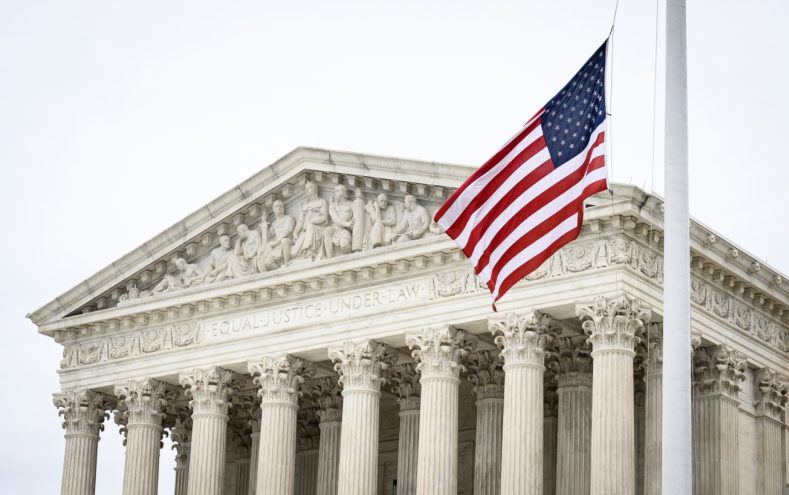
The Supreme Court’s decision in U.S. v. Arthrex expands the avenues for politicizing agency adjudication.
Administrative adjudication is susceptible to contamination because it has a “due process dimension that does not burden other government officials.” An expanded appointments power, the elimination of for-cause removal protections, and other modes of ensuring that adjudicators consider political interests may impede procedural fairness and negatively impact decisional independence.
Recent Supreme Court cases highlight three distinct points of entry for political influence over agency adjudicators. First, the political appointment of administrative law judges (ALJs) favors adjudicators whose views align with those of the President.
Second, the elimination of for-cause removal protections for adjudicators allows the specter of presidential disapproval to impact administrative decision-making.
Third, agency leaders appointed by the President have political authority to unilaterally self-refer and review administrative decisions themselves, which can impact administrative due process in a variety of ways—including by making the adjudication process less transparent, accessible and fair, as well as by increasing the likelihood that adjudicatory outcomes favor the President’s policy goals.
To help mitigate these political influences, the Supreme Court should make the guidelines that determine whether an administrative adjudicator is a principal officer, or an officer at all, more restrained and precise.
A few years ago, the Supreme Court cemented the politicized appointment of certain ALJs.
In Lucia v. Securities and Exchange Commission, the Court declared that ALJs at the U.S. Securities and Exchange Commission (SEC) are constitutional “officers” subject to the Appointments Clause of the Constitution. This designation means that ALJs at the SEC must be appointed by the President or the SEC Commissioners who head the agency.
The Lucia decision has led to a reduction of the legislature’s ability to insulate ALJs from political interests. The decision also caused some administrative adjudicators to be rendered illegitimate because they were not properly appointed under the Article II Appointments Clause process.
Because of this decision, the pressure to engage with political concerns looms over ALJs’ “special responsibility to serve the public with factual determinations that assure fairness and are largely outside politics.”
Soon after Lucia, executive policies sought to exempt ALJs from competitive service to place them more squarely within the constitutional appointments framework. In this way, these policies “transmuted” the Lucia decision “almost immediately through political channels to apply broadly across the government” and disrupted the “longstanding consensus in favor of civil service protections for federal officers as a means of preventing cronyism and political patronage.” In addition, these policies increased the likelihood that administrative decision-makers will lose the removal protections that render these judges expert and independent.
More recently, in U.S. v Arthrex, both the U.S. Court of Appeals for the Federal Circuit and the Supreme Court amplified Lucia. The Federal Circuit made an additional foray into the elimination of for-cause removal protections for administrative judges. While the Supreme Court overturned this approach, it ultimately expanded direct political control over administrative adjudication.
The Supreme Court, in the case of Arthrex, decided this past term, determined that certain administrative adjudicators are not only officers but principal officers. In this case, the spotlight was on whether administrative patent judges (APJs) in the U.S. Patent and Trademark Office (PTO) are inferior officers, such that they may be appointed by the Secretary of Commerce as specified by statute, or principal officers, such that their appointment must be made by the President herself.
Note that under the Patent Act, as added by the Leahy-Smith America Invents Act, “the agency head has a significant level of supervision and oversight of administrative patent judges, but the agency head does not have the power to review and reverse their decisions and can remove the APJs” only for cause.
Whether or not APJs are officers in the first place was scarcely up for debate. Indeed, the Federal Circuit, prior to Supreme Court review, had little trouble concluding that APJs were officers. In contrast, the Lucia Court wrestled with whether SEC ALJs were officers of any sort, subject to constitutional appointments. The Federal Circuit in Arthrex also determined that ALJs, as they stood, were principal officers, in part because they issued final written decisions on patentability.
This June, the Supreme Court came to the same conclusion.
However, the Federal Circuit and the Supreme Court differed in their remedies. Both courts restored APJs to inferior officer status, but they each did so in different ways. The Federal Circuit severed the APJ’s statutory for-cause removal protections. The Supreme Court, by contrast, gave the agency head—in this case, the PTO Director—final authority over APJ decisions. The attorney arguing for Arthrex reportedly said during oral argument that trying to insert the director above the board as a single decision-maker “isn’t a surgical solution,” but rather a “vivisection.” The Supreme Court ultimately chose this outcome.
In doing so, the Arthrex Court squandered the opportunity to confront the possibility that if agency adjudicators are hired on a highly political basis, acting under the fear of at-will removal or able to be unliterally reversed by political agents, such adjudicators are more likely to elevate partisan interests over other norms or values prized by the legislature.
Indeed, Justice Sotomayor raised the inherent tension between political control and adjudicative independence during oral argument. Likewise, in his dissent, Justice Breyer identified the need for technical patent adjudications to have “greater, not less, independence from those potentially influenced by political factors,” and noted that “the Court’s decision prevents Congress from establishing a patent scheme consistent with that idea.”
Nonetheless, the Court’s majority chose not to infuse clarity and moderation into the criteria that govern whether an administrative adjudicator is an officer, let alone a principal officer at that.
As to which criteria might render an adjudicator an officer, Justice Sotomayor notes in her Lucia dissent that “this Court’s decisions have yet to articulate” this standard clearly. Furthermore, she offers the following suggestion: “To provide guidance to Congress and the Executive Branch,” the Court should hold that “one requisite component of ‘significant authority’ is the ability to make final, binding decisions on behalf of the Government.” So, the characteristic that the Arthrex majority took to establish principal officer status should indicate only that the adjudicator is an officer, as opposed to an employee.
Concerning which criteria might render an officer a principal, rather than inferior, officer, the Court should have reversed the Federal Circuit. The Federal Circuit ignored Edmond v. U.S., which is controlling precedent holding that “supervised” administrative judges are inferior officers, and that a lack of upper-level policymaking and supervision is necessary to trigger presidential appointment.
On this front, Justice Thomas offers a voice of reason in his Arthrex dissent (joined in part by Justices Breyer, Sotomayor and Kagan). Justice Thomas explains that, like the judges in Edmond, “there can be no dispute that administrative patent judges are, in fact, inferior: They are lower in rank to at least two different officers.” Furthermore, the PTO Director “exercises a broad policy-direction and supervisory authority over” APJs and is “responsible for providing policy direction and management supervision.” Accordingly, as Justice Thomas argues broadly, the Court should have applied its functionalist decision in Edmond to find that APJs are inferior. The fact that this opinion is penned by Justice Thomas is surprising, however, given his litany of originalist critiques of Edmond (in the portion of his Arthrex dissent that is joined by no one).
Instead, the Arthrex majority gave the PTO Director unilateral control over all agency adjudication. In doing so, the Court added to the menu of options for increasing political influence on administrative adjudication. More specifically, Lucia and Arthrex together strengthen political power over adjudicators in three distinct ways and at slightly different points in the presidential hierarchy: Lucia, by necessitating the hiring of certain ALJs by the President or agency head; the Federal Circuit in Arthrex, which called for at-will removal of APJs by the agency head; and the Supreme Court in Arthrex, which expanded direct control over technical adjudications by an agency head.
Certainly, both the Federal Circuit’s approach of stripping good cause protections from APJs and the Supreme Court’s remedy of intensifying the PTO Director’s authority over adjudication avoid the outcomes of the Lucia Court’s decision to reclassify adjudicators altogether. Had the Arthrex Court reclassified APJs as principal officers, this would have invalidated several previous decisions by APJs and possibly other administrative adjudicators, and “the structure of agency adjudications” may have been “significantly altered” as well.
Nonetheless, severing for-cause removal provisions for agency adjudicators and expanding agency head power to self-refer and review administrative adjudications both compound the deterioration of independent decision-making.
Ultimately, allowing removal protections to remain standing and clarifying the terms of political appointment could have staved off some of the undesirable consequences of political influence on administrative adjudication. In addition, more precise guidance from the Supreme Court would assist the legislature in creating statutes establishing ALJ independence that the Court would have to respect.
This essay is part of a nine-part series, entitled The Supreme Court’s 2020-2021 Regulatory Term.




